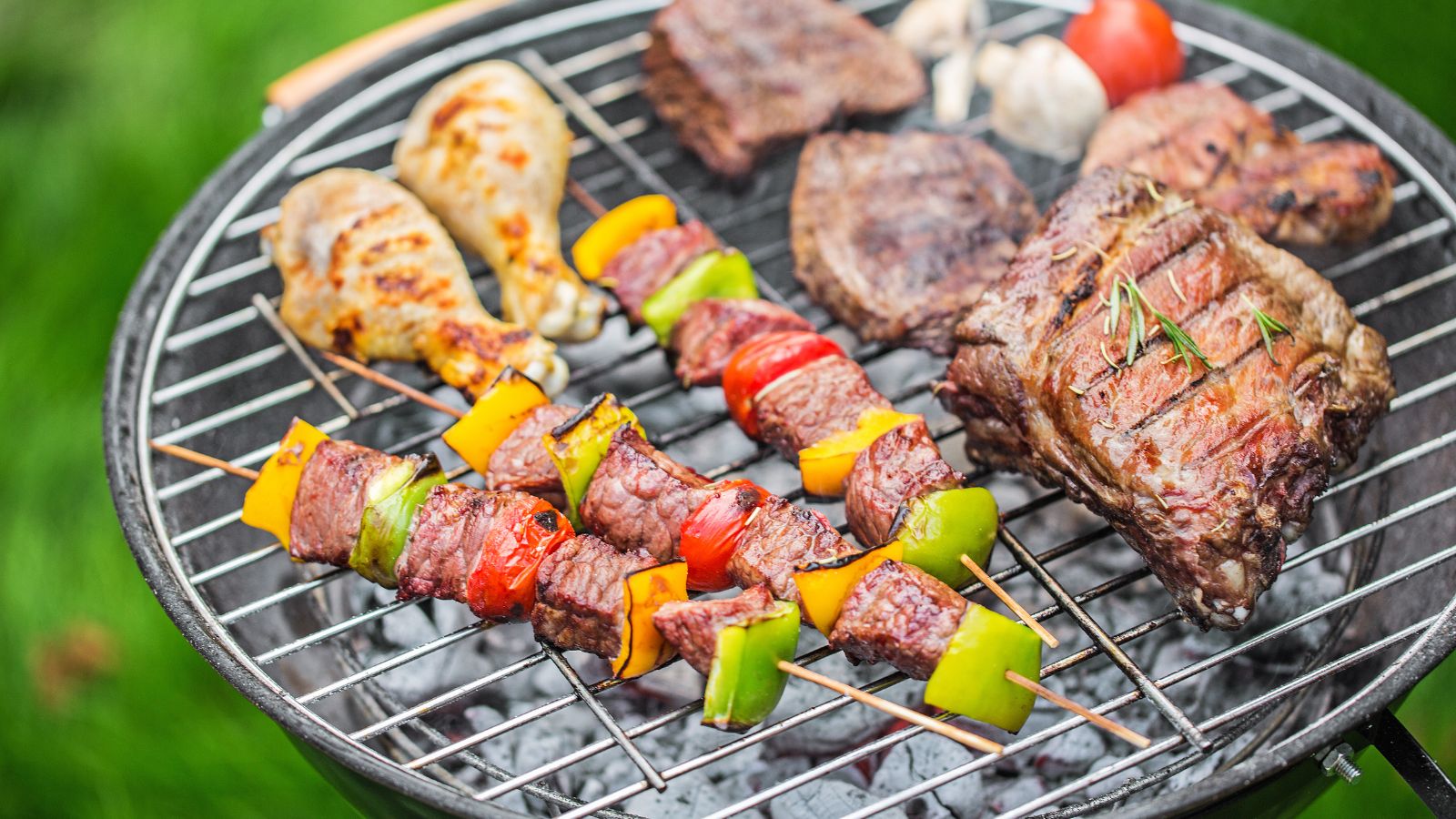Imagine sinking your teeth into a tender, smoky, and perfectly grilled piece of meat. The secret to achieving this mouthwatering experience is mastering the art of using a smoker grill.
In this guide, we will confidently and clearly walk you through the entire process, from choosing the right equipment to preparing, smoking, and enjoying your delicious barbecue. Ready to impress your family and friends with your newfound smoking skills?
Let’s dive into the world of smoker grills and get you started on your journey to becoming a grill master
Smoking meat is a time-honored tradition that brings out the best flavors in your food. When you learn how to use a smoker grill, you can discover the joys of creating tender, juicy, and flavorful meals. Here are the essential steps and techniques for mastering your smoker grill.
Understanding your smoker grill is vital as each type has its advantages and challenges. It’s important to familiarize yourself with the different fuels and their respective properties to achieve the perfect smoke. By mastering the temperature and learning how to set up your smoker grill, you’ll be well on your way to producing mouth-watering smoked foods.
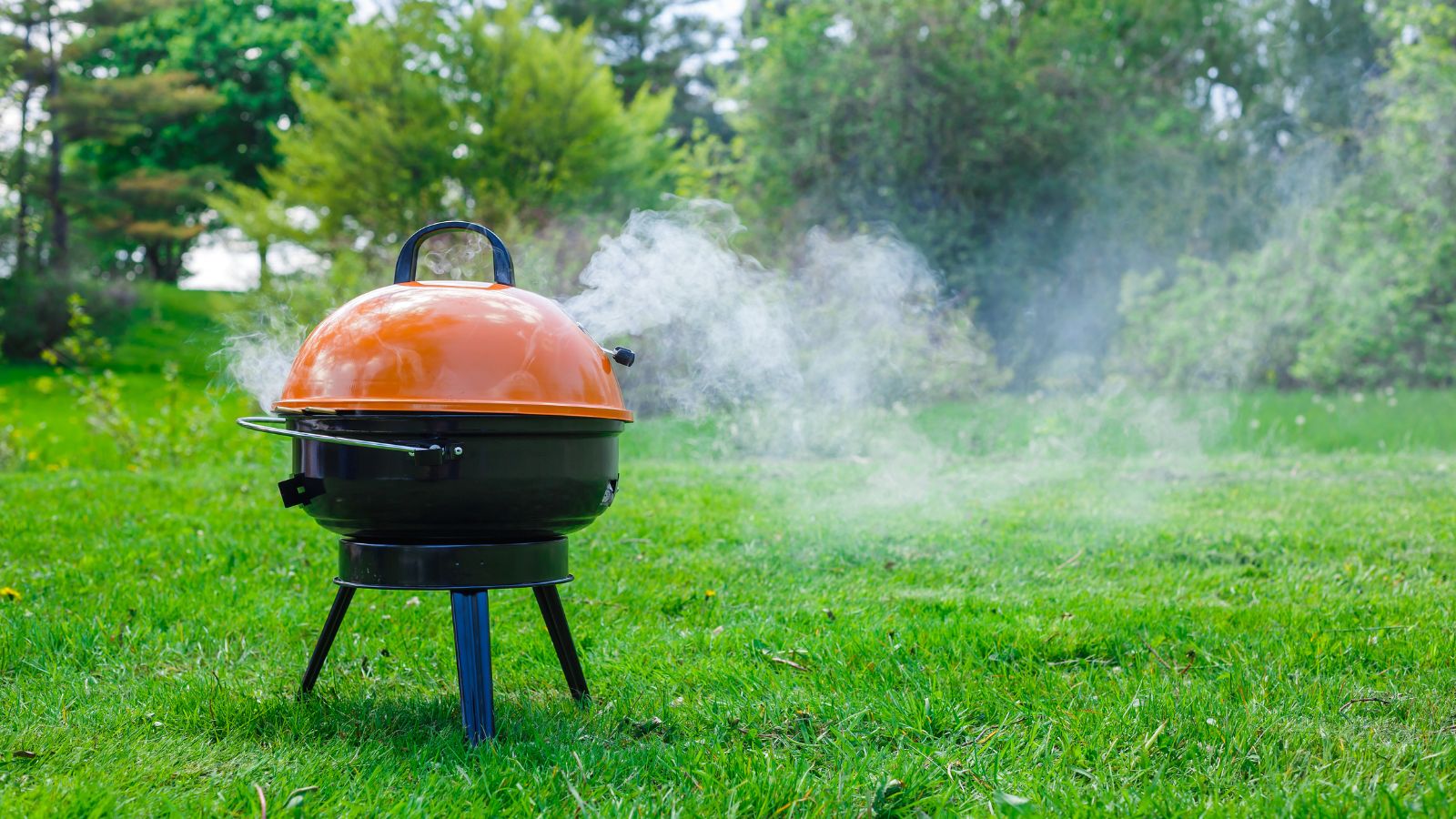
Once you’ve learned the basics, it’s time to explore the art of smoking and choose the right seasonings and flavors for your meats. Proper care and maintenance of your smoker grill are also essential to ensure its longevity and consistent results. With practice and creativity, you’ll soon become the ultimate smoking master.
Key Takeaways on How to Use a Smoker Grill
- Familiarize yourself with your smoker grill and choose the right fuel
- Master temperature control and setting up your smoker for perfect results
- Explore seasonings and flavorings while maintaining your grill for longevity
Understanding Your Smoker Grill
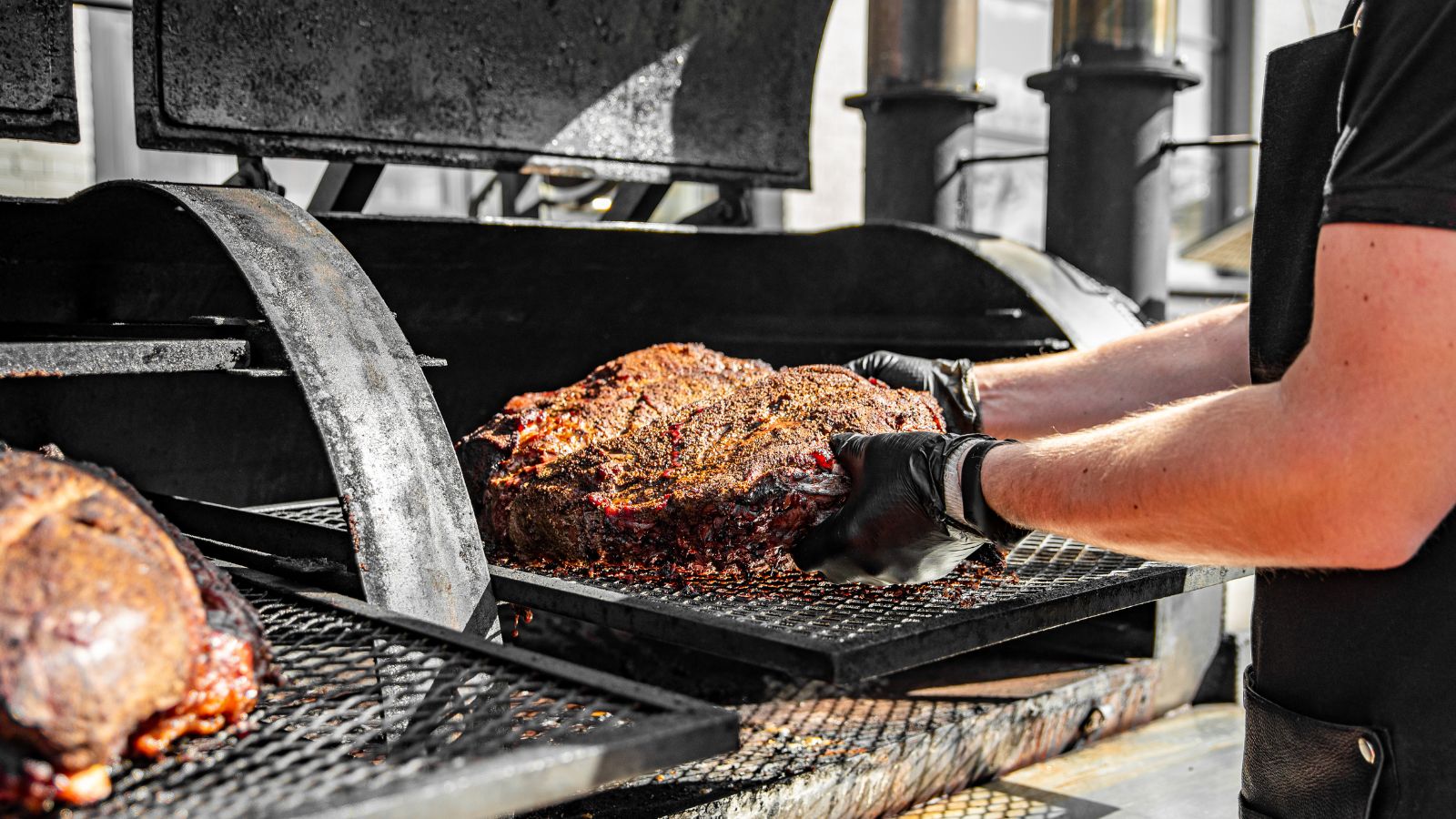
As we dive into the world of smoker grills, it’s essential to understand the various types available and how they work. Smoker grills come in various designs, such as offset smokers, kettle grills, barrel smokers, and more. Each type has its advantages, so let’s explore them further.
Offset smokers have a horizontal chamber where the heat source is placed alongside instead of directly above the cooking area. This design allows for easy heat adjustment and fuel replenishment. Offset barrel smokers function similarly but use a barrel-shaped chamber for cooking.
Kettle grills are designed to provide a more compact and versatile grilling experience. The rounded shape helps distribute heat evenly and is perfect for small spaces like patios and balconies. You can even turn a kettle grill into a smoker with proper setup and cooking methods.
Barrel smokers are another popular option, acclaimed for their simplicity and robustness. These smokers utilize vertical chambers and adjustable grates, providing ample space for cooking larger cuts of meat and achieving optimal smoke distribution.

There are three main types of smokers when it comes to fuel: charcoal, gas, and electric. Charcoal smokers offer a rich, smoky flavor that many BBQ enthusiasts covet. However, temperature control can be more challenging as it requires constant monitoring and adjustments.
Gas smokers offer the convenience of quick heat-up and easy temperature control using either propane or natural gas. They may not provide the same authentic smoky flavor as charcoal smokers, but they are a popular choice for those who prioritize ease of use.
Lastly, electric smokers eliminate the need for a separate heat source by using heating elements inside the smoker. Temperature control is simple, and you won’t need to worry about replenishing fuel or managing heat. However, the flavor may not be as rich when compared to charcoal or gas smoker grills.
Now that we have a basic understanding of the different smoker grill types and their respective fuel sources, choosing a smoker that best suits your needs and preferences is crucial. No matter which type you select, you’re well on your way to mastering the art of delicious smoked meals.
Choosing the Right Fuel

As we explore the process of using a smoker grill, one of the most important considerations is selecting the ideal fuel. There are several options, each with its own benefits and drawbacks. In this section, we will discuss some of the popular choices, like wood and charcoal, and their variations.
When it comes to wood, there are plenty of options for generating smoke. Two of the most popular include wood chips and wood logs. Wood chips are a versatile choice that provides a variety of flavors with minimal effort. They are excellent for shorter cooking times as they ignite faster and produce a consistent and flavorful smoke.
In contrast, wood logs are larger and burn slower, giving you steady heat for long smoking sessions. Both hardwoods and fruitwoods work well for smoking, with each offering distinct flavor profiles. Hardwoods like oak and hickory produce a robust, bold flavor, while fruitwoods like apple and cherry give a lighter, sweeter taste.

Another widely used fuel option is charcoal. This can be found in the form of charcoal briquettes and hardwood charcoal lumps. Charcoal briquettes are known for their uniform shape and size, providing consistent heat throughout the smoking process. On the other hand, hardwood charcoal lumps are more irregular, but they typically ignite faster, burn hotter, and impart a smokier flavor to your food.
A particularly popular cooking technique known as “low and slow” requires maintaining a consistent temperature of 225-250 degrees Fahrenheit, which is achievable with charcoal. However, avoid using lighter fluid when using charcoal, as it can alter the taste of your smoked food.
A better option would be to use a chimney starter for a more natural, uniform ignition.
In conclusion, selecting the appropriate fuel for your smoker grill depends on factors like the desired flavor and cooking duration. Experimenting with different types of wood, charcoal, and even mixing them can help you achieve the perfect balance of taste, aroma, and cooking efficiency.
How to Set Up Your Smoker Grill
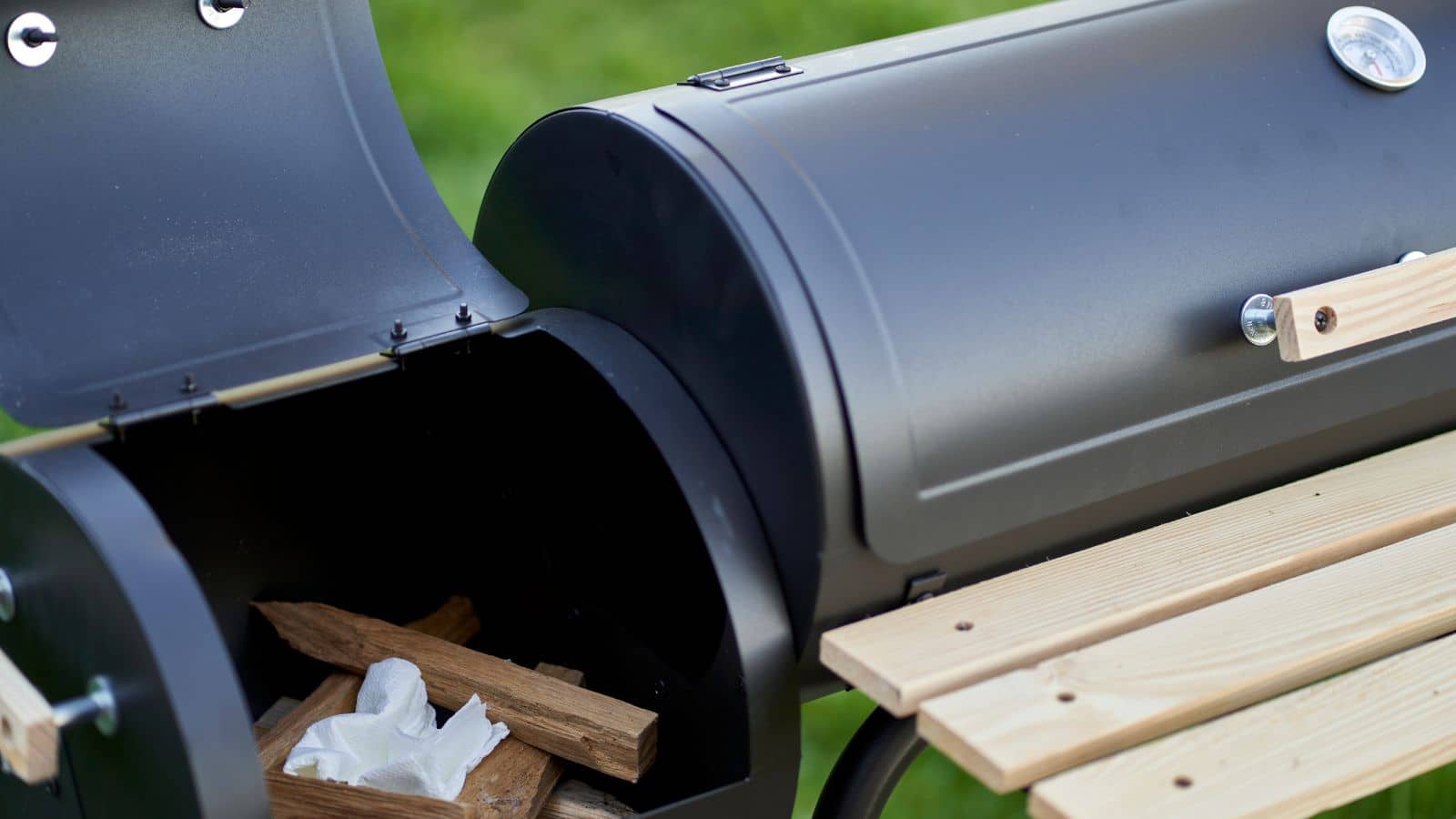
Setting up a smoker grill may seem intimidating initially, but with a few simple steps, we can start our smoking journey. Let’s go over the essential components and their functions that we need to understand for properly setting up our smoker grill.
First, we need to familiarize ourselves with the smoker box and the firebox. The smoker box is where our food will be placed, while the firebox is responsible for generating heat and smoke. Make sure these components are clean and ready to use.
Next, we’ll focus on the vents and dampers. Vents are crucial for controlling airflow inside the smoker. The intake vent (also called the intake baffle) is positioned near the firebox and helps regulate the amount of air entering the smoker. The chimney baffle, or exhaust vent, is situated near the top of the smoker and allows the smoke and heat to escape. Adjusting these vents helps us maintain our desired cooking temperature.
Once we’ve familiarized ourselves with these components, we can move on to the set-up process. Start by prepping the firebox with charcoal or wood. Light the charcoal and allow it to heat up until the coals are covered in a light layer of gray ash. This ensures a consistent heat source for our smoking process.
After the coals are ready, place a pan filled with water in the smoker box. This pan helps create moisture and regulate the temperature in the smoking chamber. It’s essential to maintain a steady cooking temperature, usually around 225°F, throughout the smoking process. By adjusting the vents and dampers, we can control the airflow and keep our smoker at the perfect temperature.
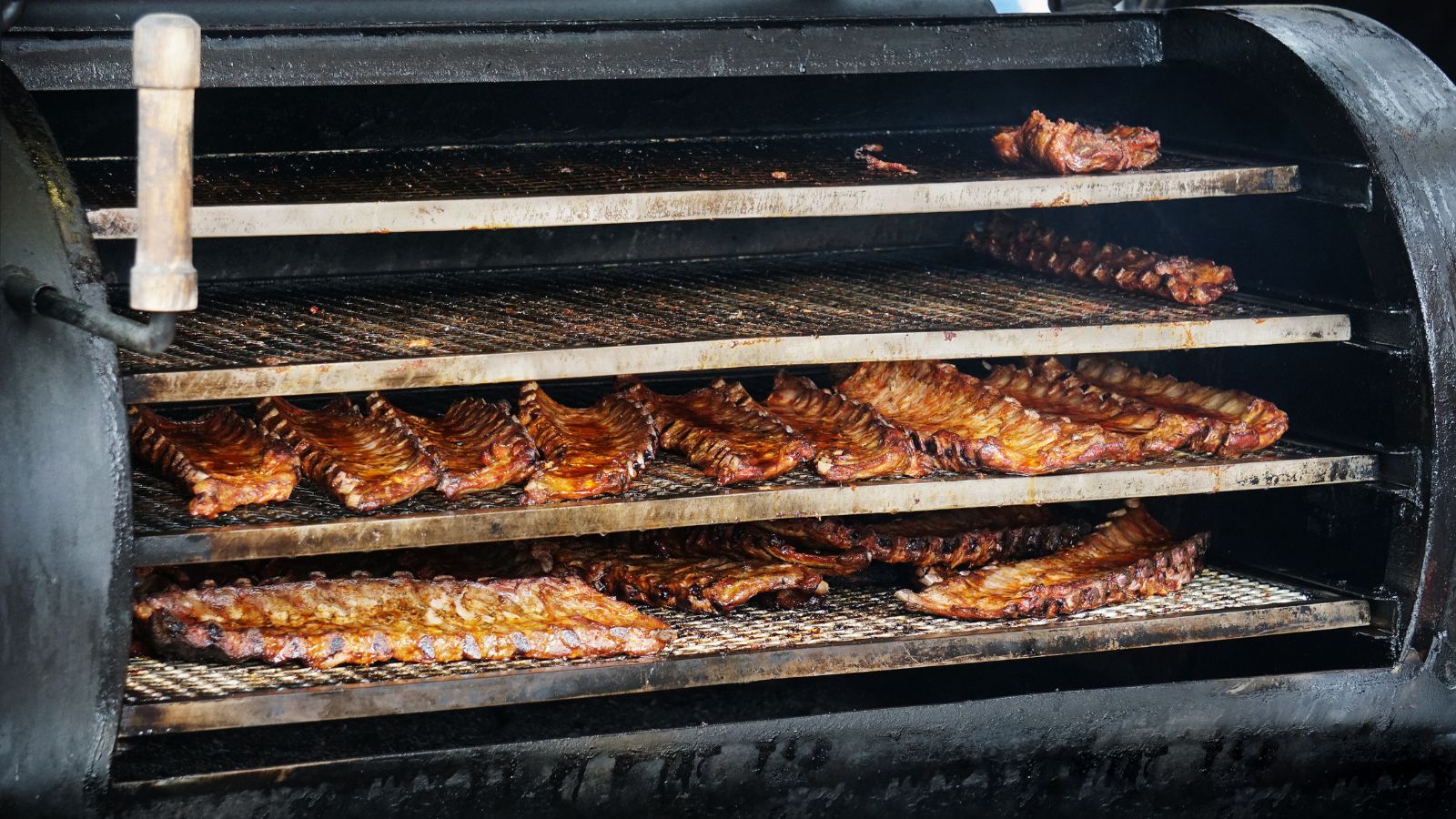
Finally, place the food on the grates in the smoker box, positioning it as far away from the firebox as possible. This helps ensure even cooking and prevents direct heat from causing flare-ups. Close the smoker lid, and we’re ready to start cooking our delicious smoked meals. Don’t forget to regularly monitor the temperature and adjust the vents as needed.
By following these steps, we’ll have our smoker grill set up and ready to provide mouthwatering, smoky flavors to our favorite dishes. As we become more comfortable with our smokers and learn to fine-tune the temperature control, our smoking skills will undoubtedly improve.
Happy smoking!
Mastering the Temperature
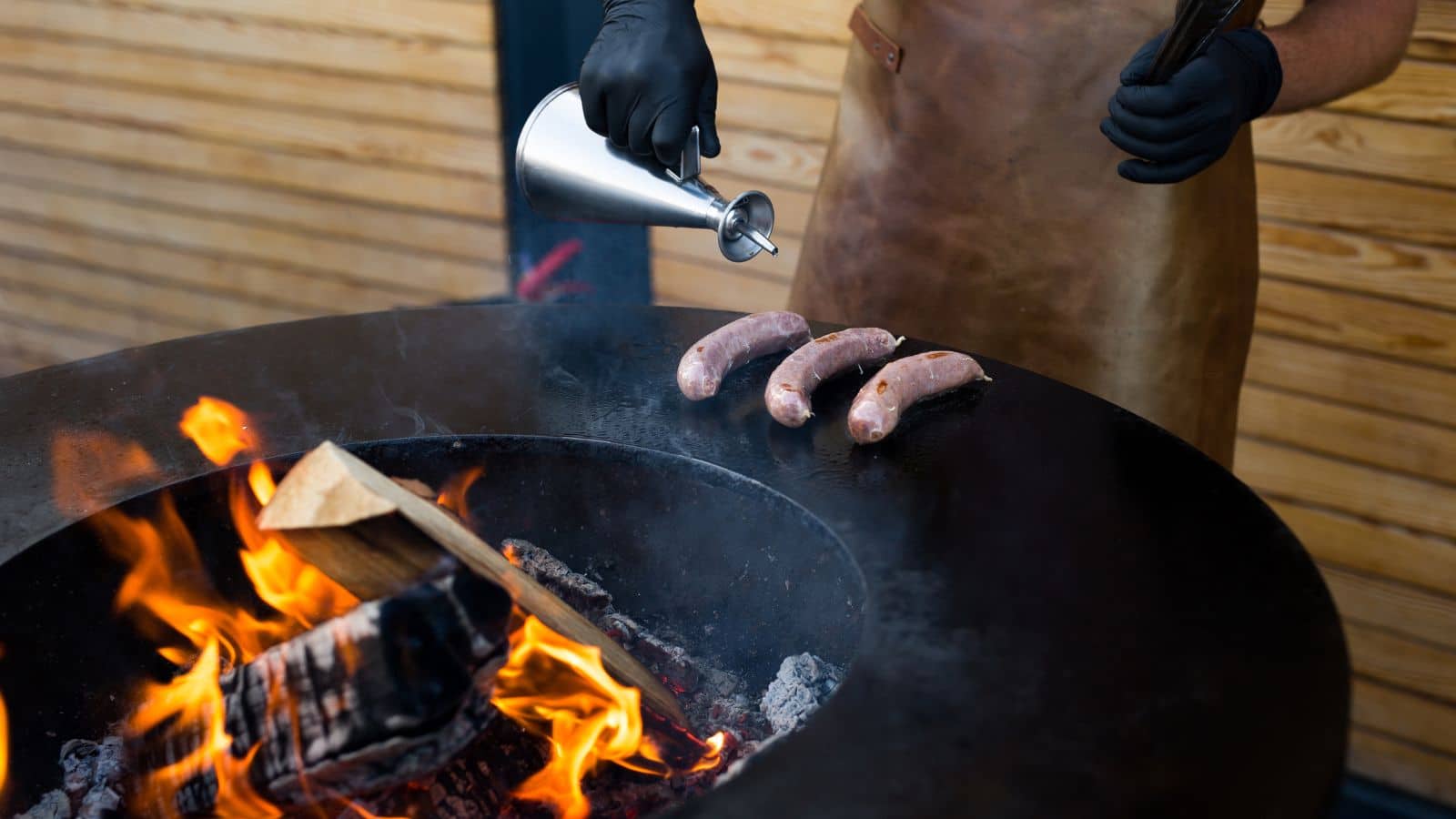
When using a smoker grill, it’s crucial to maintain proper temperature control. The key to delicious, tender, and perfectly cooked meat lies in regulating both the heat source and heat zone. Let’s discuss how to master the temperature and get the best results.
To begin with, it’s essential to understand the difference between direct and indirect heat. Direct heat involves placing the meat right above the heat source, which is suitable for quick-cooking items such as burgers and hotdogs.
On the other hand, indirect heat requires the meat to be placed away from the heat source, resulting in a slow and steady cooking process, perfect for larger cuts of meat or smoking.
When it comes to temperature control, it’s crucial to monitor the internal temperature of the meat, ensuring it reaches the desired level without overcooking. We recommend using temperature probes to keep an eye on the internal temperature of the meat throughout the cooking process.
Adjusting the airflow in your smoker is another critical aspect of temperature control. By opening and closing the intake damper vent and exhaust vent, you can regulate the heat levels and maintain ideal cooking temperatures for various cuts of meat. The ideal range for low to medium heat is between 250°F and 350°F, while higher heat ranges from 350°F to 450°F.
To prevent overcooking, it’s also important to understand the characteristics of your heat source – be it charcoal, gas, or wood chips. Each heat source behaves differently, so it’s essential to be familiar with the burn times and the heat produced. Ensure you add fuel at appropriate intervals, typically every couple of hours, to maintain consistent temperatures throughout the cooking process.
Mastering the temperature while using a smoker grill involves monitoring the internal temperature, controlling the airflow, and understanding your heat source. By following these guidelines, you can rest assured that your smoked meats will turn out tender, juicy, and delicious. Do not hesitate to consult additional resources if you need guidance on managing the temperature of gas or charcoal grills.
Seasoning and Flavoring Your Meat
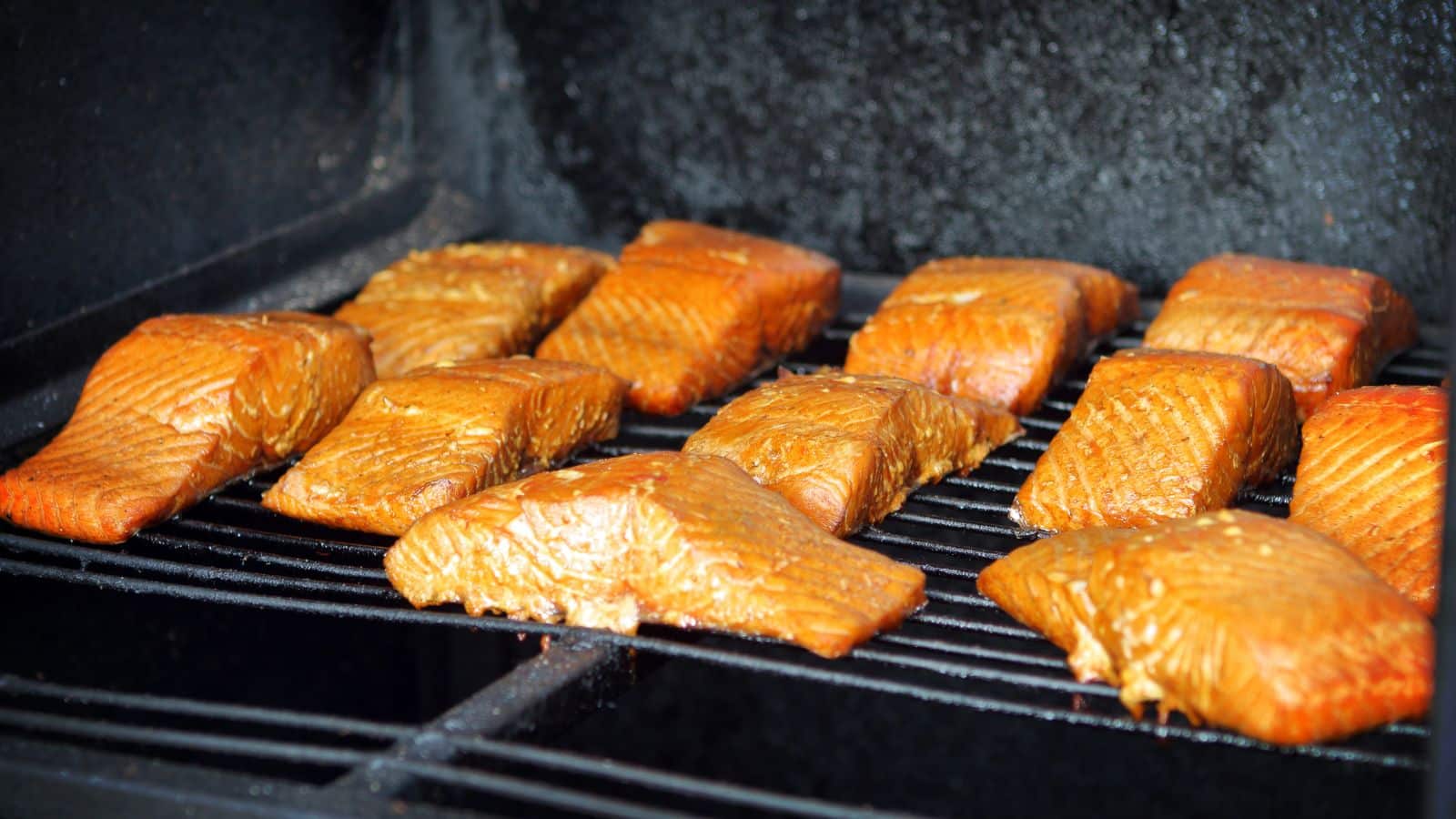
When it comes to smoking various meats, the key to a delicious outcome lies in proper seasoning and flavoring. We’ll cover some essential tips for achieving the best possible flavor in popular smoked meats like ham, ribs, brisket, pork shoulder, pork butt, chicken, turkey, salmon, lamb, and sausage.
To begin, it’s crucial to select the appropriate rub or marinade for your chosen meat. For pork cuts such as shoulder and ribs, a mixture of brown sugar, paprika, and other warm spices adds depth and complements the natural flavors.
For poultry like chicken and turkey, using a simple herb and citrus-based marinade helps to keep the meat tender and moist. For heartier meats like brisket and ham, opt for a savory, spice-based rub that enhances the meatiness while adding a flavorful crust.
In addition to applying seasoning directly to the meat, the choice of wood used in the smoker can greatly impact the final flavor profile. Heavier wood varieties like hickory and mesquite pair nicely with red meats such as brisket or lamb. In contrast, lighter woods like apple and cherry complement more delicate flavors found in poultry and fish like salmon.
Timing and temperature control are also crucial elements in the smoking process. Make sure to follow the recommended cooking temperatures from USDA for each specific meat to ensure proper doneness and safety.
Overall, the secret to achieving undeniably delicious smoked meats lies in using the right combination of seasoning, wood choice, temperature control, and patience. Keep experimenting and refining your process, and your smoked creations will continue to impress.
The Art of Smoking
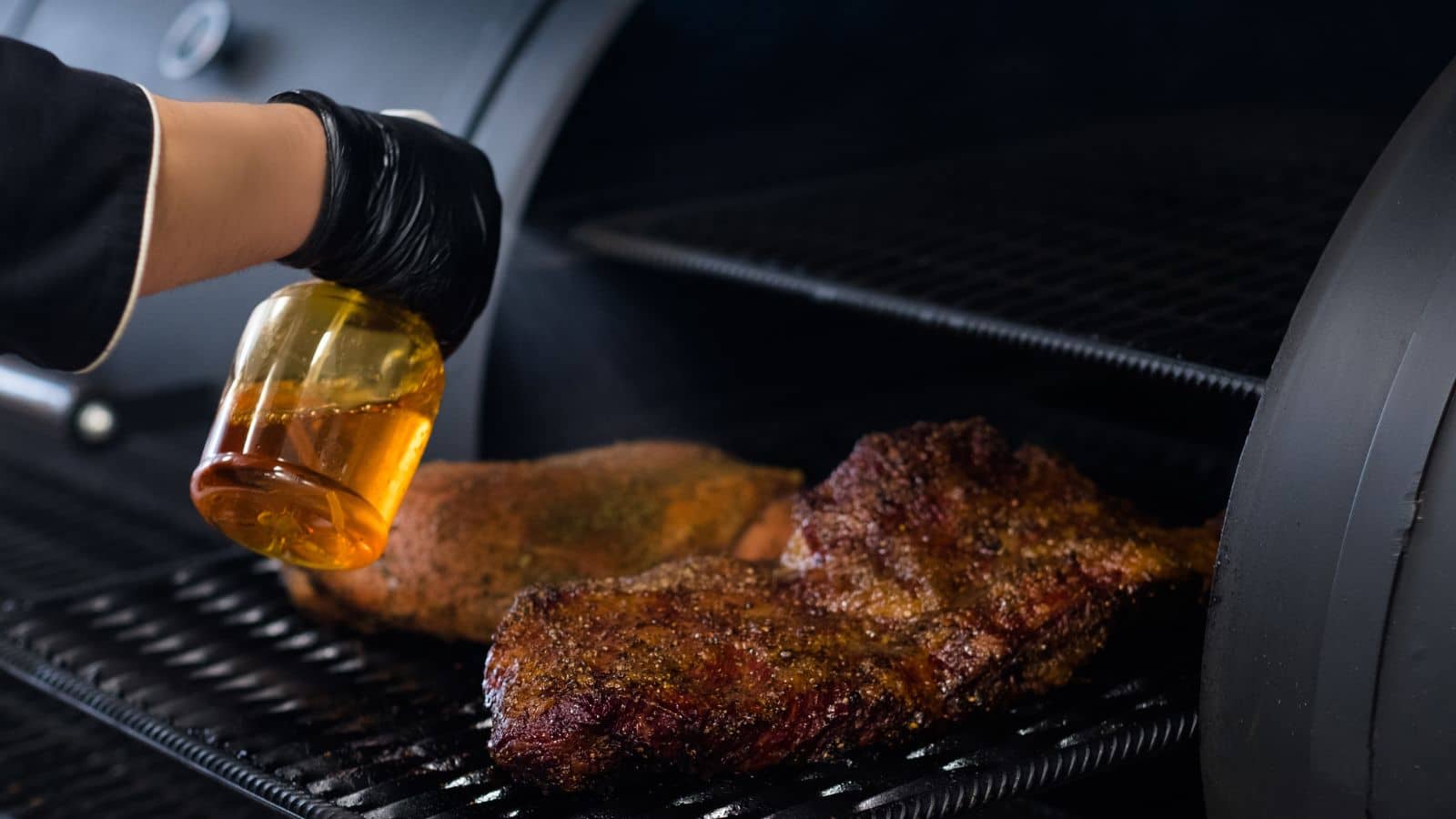
Smoking meat is an age-old technique that involves cooking food, particularly meats, at a low temperature for an extended period of time. Adopting the “low and slow” approach allows the flavors to develop, tenderize the meat, and create a crispy bark on the outside.
Before starting the smoking process, setting up your smoker grill properly is essential. Aim for a stable temperature between 225-250 degrees Fahrenheit, as even heat is crucial for optimal results. It is also a good idea to use temperature probes to maintain and monitor the temperature during cooking.
Once the grill is set up, we should focus on preparing the meat. Dry rubs or marinades can be used to enhance the flavor of the meat. Afterward, place the meat on the smoker grill, close the lid, and allow it to cook uninterrupted for approximately 1 to 1 ½ hours per pound.
During the smoking process, it’s important to resist the urge to open the smoker. Doing so will cause heat loss and slow down the cooking process. Keeping the smoking chamber closed allows the smoke to surround the meat and infuse it with flavor while ensuring an even cooking temperature.
In summary, the art of smoking involves a delicate balance of preparation, patience, and proper grill management. By adhering to the low and slow approach, we can achieve flavorful and tender smoked meats with that desirable crispy bark.
Proper Care

Proper care and maintenance are essential for ensuring that your smoker grill remains in peak condition. By following these simple steps, we’ll help you keep your smoker running smoothly and efficiently for years to come.
To maintain optimal performance, it is crucial to clean your smoker, removing grease, debris routinely, and any remnants of past smoking sessions. This not only prevents unpleasant odors and fire hazards but also ensures that the flavor of your food remains unaffected.
After each use, we recommend diligently clearing leftover food particles and delicately scraping off residue from the grates. Also, an aluminum foil liner in the water pan can greatly facilitate the cleaning process.
Next, preventing rust from developing on your smoker grill is crucial. Many smoker grills, including the popular Weber models, come with a protective coating that helps resist rust. However, you’ll need to act quickly if you notice any signs of rust. Use a wire brush to remove rust and apply a coat of high-temperature paint to the affected area.
Maintenance

Don’t overlook the importance of regularly checking the water pan when planning maintenance for your smoker grill. The water pan helps regulate the temperature inside the grill and contributes to overall moisture levels. Ensure that it’s free of debris and filled with water before every smoking session.
In some cases, you may find that additional ventilation is needed to improve the airflow within your smoker. Drilling a few small holes near the bottom of the smoker can help, but be cautious not to damage the structural integrity of the grill. You can also try opening the chimney to create better airflow during smoking sessions.
By implementing these care and maintenance practices, we can ensure that our smoker grill continues providing delicious, flavorful meals for our friends and family.
Frequently Asked Questions
What are the basic steps to smoke meat?
When smoking meat, start by choosing the right cuts and seasoning them accordingly. Next, prepare your smoker by setting it up according to the manufacturer’s instructions. Preheat the smoker to a specific temperature, usually between 225°F and 250°F, depending on the type of meat. Place the meat inside the smoker and let it cook low and slow for several hours.
How can I control the temperature in an offset smoker?
To control the temperature in an offset smoker, monitor the built-in thermometer closely. Adjust the vents by opening or closing them to increase or decrease the airflow. This affects the rate at which the charcoal or wood burns, thus impacting the temperature inside the smoker. Aim for a consistent temperature throughout the smoking process.
How long should I let the wood chips soak before using?
Soaking wood chips before using them in a smoker is a common practice. To achieve the best results, soak wood chips for at least 30 minutes to an hour. This helps them smolder and produce more smoke instead of burning too quickly.
What’s the process of using a gas smoker?
To use a gas smoker, first ensure that your gas tank is connected and the valve is open. Light the gas burner and preheat the smoker to the desired temperature. Add soaked wood chips to the designated tray, and place the meat on the cooking racks. Adjust the heat as needed to maintain a consistent temperature, and occasionally add more wood chips for optimal smoke production. Smoking on a gas grill can be just as effective as using other types of smokers.
Which type of wood is best for smoking?
Different types of wood impart distinct flavors when smoking meat. Some popular choices include hickory, maple, cherry, apple, and mesquite. The choice of wood greatly depends on personal preferences and the type of meat being smoked. Experimenting with various wood types can help you find your favorite combination.
How do I maintain the smoker grill for longevity?
Maintaining your smoker grill ensures it will operate efficiently for years to come. Clean the grates, cooking chamber, and ashtray after each use. Keep it covered when not in use to protect it from the elements. Inspect the smoker regularly for any signs of rust or damage, and replace parts when necessary. Also, remember to store it in a dry and sheltered location.

